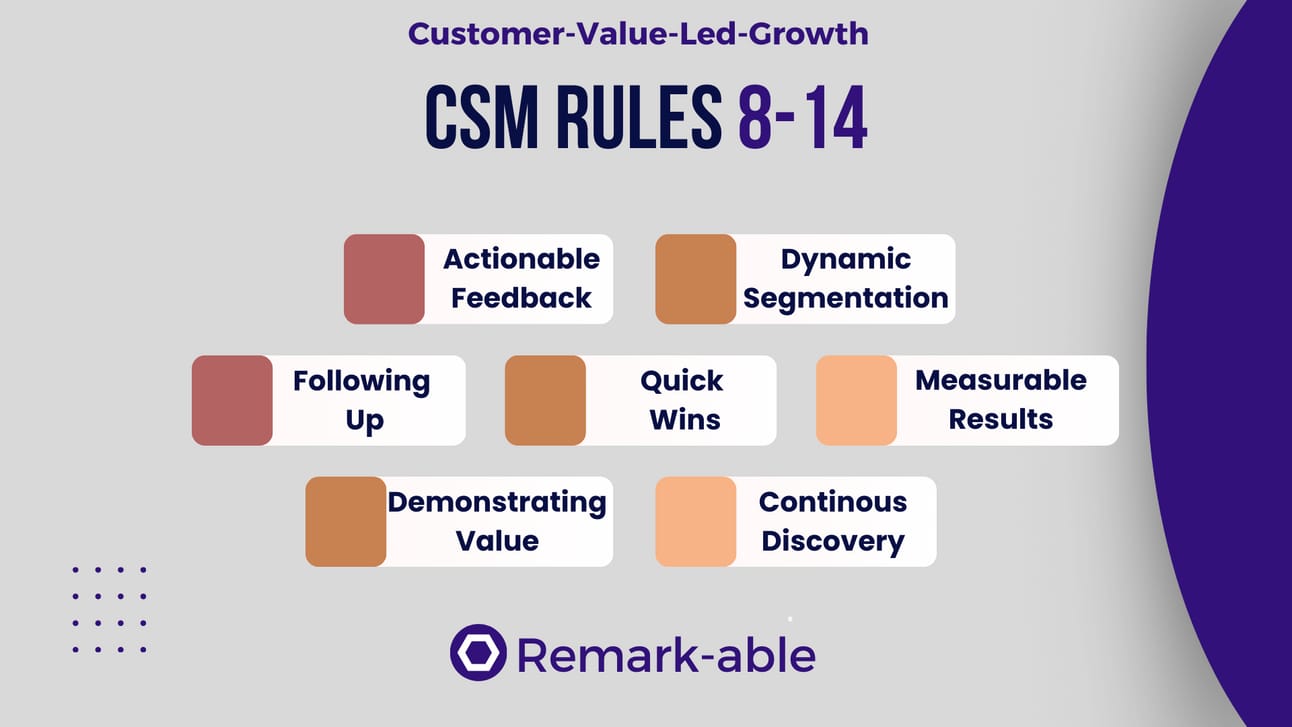Sponsored by

Trusted by Top CS Teams to Scale Personalized Engagement
See why companies like Asana, Glassdoor, and Salesloft rely on Matik to automate data-driven content at scale. Generate renewal decks, client kick-off decks, and ROI one-pagers in just a few clicks - complete with personalized text, tables, images, charts, and AI-powered insights. Instantly email hyper-personalized PDFs to your accounts, ensuring every customer gets the right content at the right time.

Hi, Markus here. Welcome to a new episode of the Customer-Value-Led-Growth Newsletter.
I share strategies and guides to help you become a proactive CSM, deliver more value for your customers, and turn it into revenue for your company every week.
Need additional help? Check out these resources 👇
Let’s skip the intro again and jump straight to the next 7 CSM rules to double your impact as a CSM 👇

1. Actionable Feedback
“How likely do you recommend [our product] to a colleague or friend?” For too long, this was supposed to be customer feedback. If they give you a 9 or 10, you are doing great; if it’s lower, then you are not.
Ok, so how is that going to help you improve the product? How is it going to help you as a CSM to improve your job? All those scores - NPS, CSAT, CES - are completely useless if you don’t have any context.
Doesn’t matter if they are good or bad. If you don’t know why your customers are giving you a high score, you might “fix” something that is not broken. If you don’t know why customers are giving a low score, you can’t make any improvements.
You need to understand what works, what does not and why. That’s something you don’t get from any kind of survey but from old-fashioned 1:1 conversations. Where you ask open and follow-up questions to get the full context.
2. Dynamic Segmentation
Dividing your customers by their size, industry, or location makes is easy. You can assign new customers to specific CSMs on autopilot. If you are selling cybersecurity software, segmenting customers by their industry makes sense. The requirements for finance are different compared to retail or transportation.
But if there are no specific requirements rooted in those characteristics, you don’t gain any advantages through that kind of segmentation. That’s why most CSM teams need to dig deeper to find criteria that enable focus and repetition, aka specialization.
Building the same customer success plans, prescribing the same education and training program, and applying the same type of advisory.
For most products, the strongest criteria for dynamic segmentation lie within
Customer Goals (unless there’s only a single outcome you are offering)
Problems to solve (unless there’s a single problem you are solving)
Capabilities (unless you have strict mandatory requirements)
If you are selling Employee Engagament Software, customer A could use it to reduce a high employee turnover whereas customer B seeks to improve productivity.
The problems they need to solve are a poor work-life balance respectively the lack of a training and education program.
Customer A does not have an HR strategy in place, while customer B has an otherwise well-established HR organization.
Subscribe to our premium content to read the rest.
Become a paying subscriber to get access to this post and other subscriber-only content.
Upgrade
